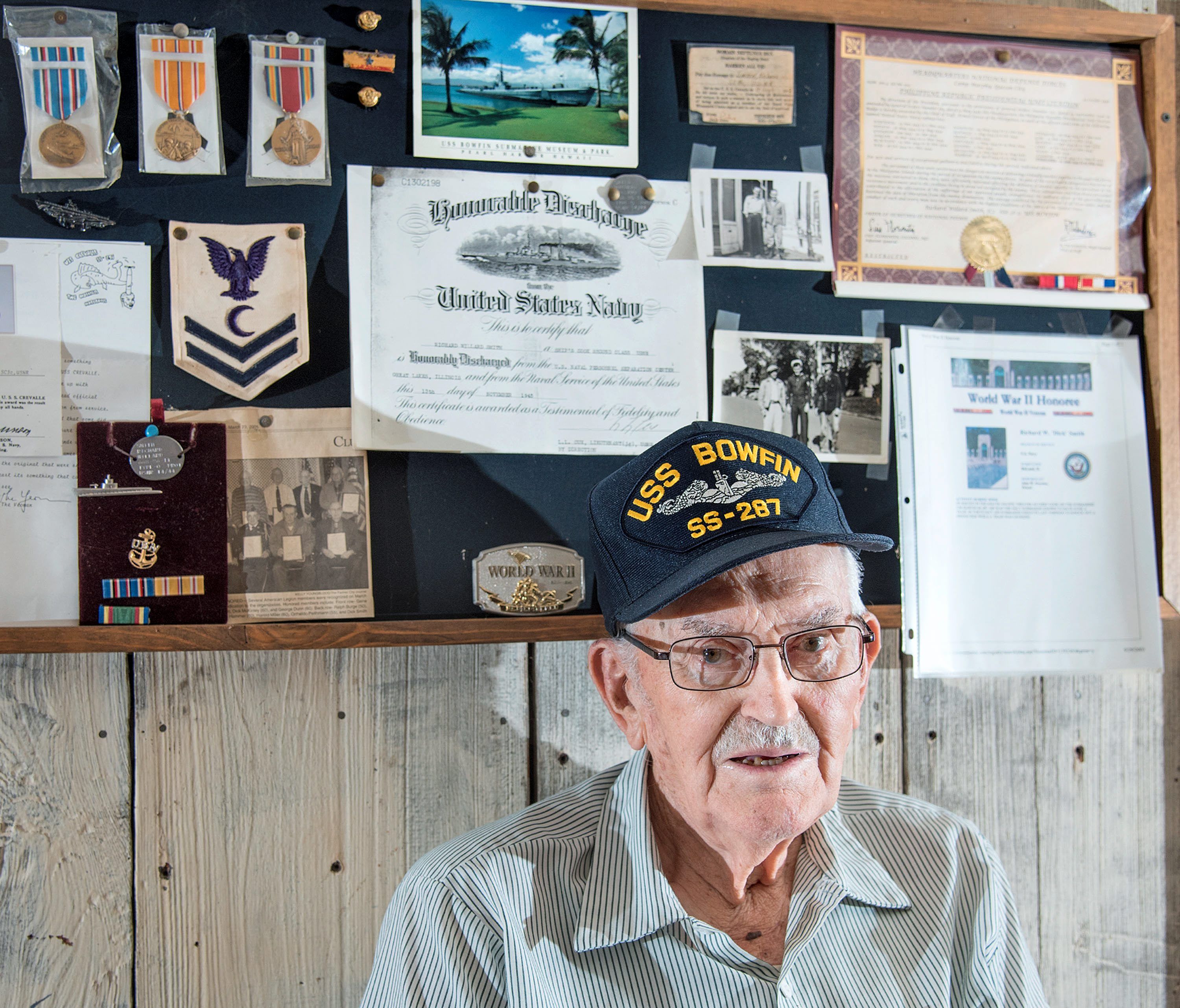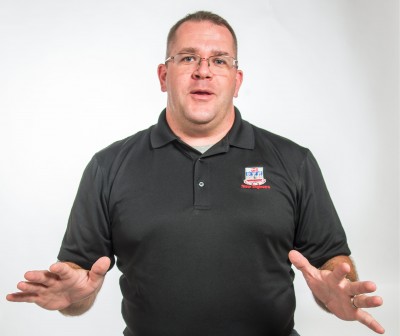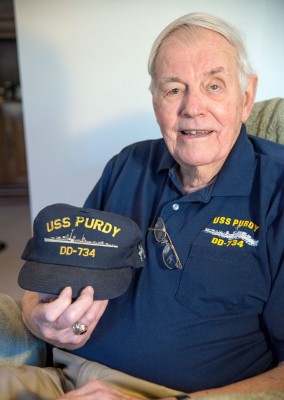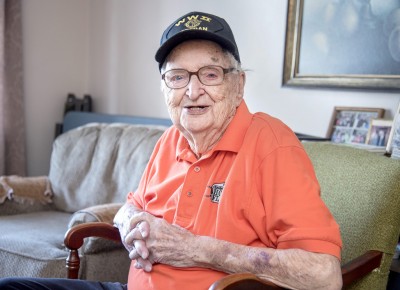Richard Smith
By Paul Wood

Photo By Heather Coit/The News-Gazette
FARMER CITY — A Japanese destroyer dropped 14 depth charges in about as many seconds on Richard Smith’s submarine.
“It shook us up really good,” said Smith, 93, who lives outside Farmer City.
Lights shattered and leaks spouted on the USS Bowfin. Everyone was ordered to be quiet and machinery was turned off as they waited for the Japanese to leave.
“They finally got tired and left,” he says.
Since compartments could be sealed off, Smith and all the other crew members were trained in what every valve did on the sub, which survived the attack — and SS-287 eventually sank 44 Japanese ships during the war.
It also blew up a bridge in Tokyo Bay, Smith recalls.
The Bowfin, nicknamed the Pearl Harbor Avenger because it was launched on the first anniversary of the attack, is now a museum at Pearl Harbor in Hawaii. Smith’s name is on a plaque there.
The museum is next to the USS Arizona Memorial Visitor Center, marking the deadly sneak attack on that December day.
Smith, who went to DeLand High School, was awakened Dec. 7, 1941, by news of the Japanese attack.
Within days, he enlisted in the Navy.
“I knew the draft was going to take me into the Army, so I volunteered for the Navy,” he says.
Support for the war was so strong that his neighbors painted yellow the mailboxes of men who did not go off to fight.
Smith volunteered for the most dangerous duty, serving on a submarine.
His sub was bombed and depth-charged, and encountered Japanese submarines, and if it went down, there was no survival.
“I still can’t swim,” he says. His crewmates found that out when they dunked him as part of a ceremony for his first crossing of the equator.
“They nearly drowned me,” he says.
Trained in Panama — “I bet I went through that canal more than anybody” — and in New London, Conn., his day job was cook for about 95 men.
But everyone on the sub trained for different missions and learned the many valves on the ship so watertight compartments could be closed off. Smith was in charge of getting ammunition to the deck guns.
He says he was lucky to be assigned to the Bowfin. His original sub was the Cisco.
Everyone on the Cisco died.
“It went out to sea, and nobody ever heard from it again,” he says. Japanese reports said a similar sub was knocked out by bombs and depth charges.
The Bowfin did enormous damage to Japanese supply ships, Smith noted.
“We had the Japanese locked in by the end of the war,” he says. “We stopped fuel and food and ammunition.”
It also went on secret missions, according to the Bowfin’s history, delivering supplies to Philippines guerrilla fighters in Mindanao, and picking up guerrillas in the South China Sea.
“The submarine won the war in the Pacific,” he says with pride.
There were other dangers, including a typhoon in the South China soon.
But he survived. Smith was discharged in November 1945 and returned to central Illinois.
He worked as a road commissioner for $5 a day and owned a place in DeLand called Dick’s Cafe. His wife, Mary Ellen, ran it for a while when he returned to farming, his family occupation.
Mary Ellen is still with him, and they have two grown children.
Do you know a veteran who could share a story about military service? Contact staff writer Paul Wood at pwood@news-gazette.com.
Read more stories from local veterans:
 Timothy Joseph Newman
FISHER — In his 18 years as an officer — so far — Timothy Joseph Newman has earned two Bronze Stars, one while serving a …
Timothy Joseph Newman
FISHER — In his 18 years as an officer — so far — Timothy Joseph Newman has earned two Bronze Stars, one while serving a …
 Robert Espeseth
SAVOY — Though he served in the Korean War, Navy Capt. Robert Espeseth’s closest brush with death came in Manila Bay. Es …
Robert Espeseth
SAVOY — Though he served in the Korean War, Navy Capt. Robert Espeseth’s closest brush with death came in Manila Bay. Es …
 Frank Morse
ROSSVILLE — Even in a large convoy zig-zagging its way across the Pacific, the USS Baxter was an attractive target for J …
Frank Morse
ROSSVILLE — Even in a large convoy zig-zagging its way across the Pacific, the USS Baxter was an attractive target for J …